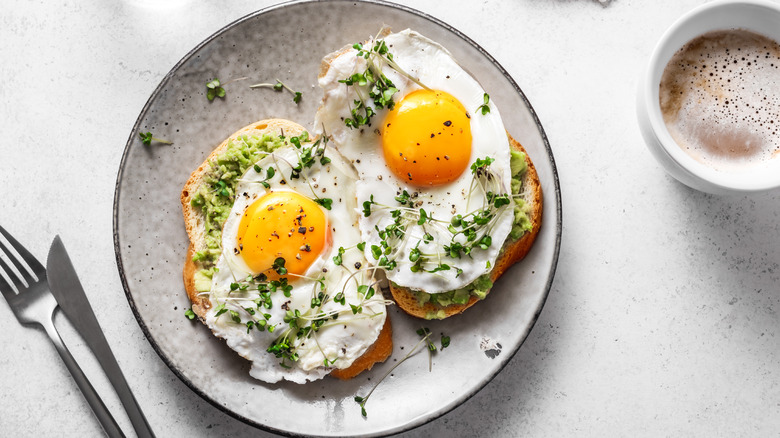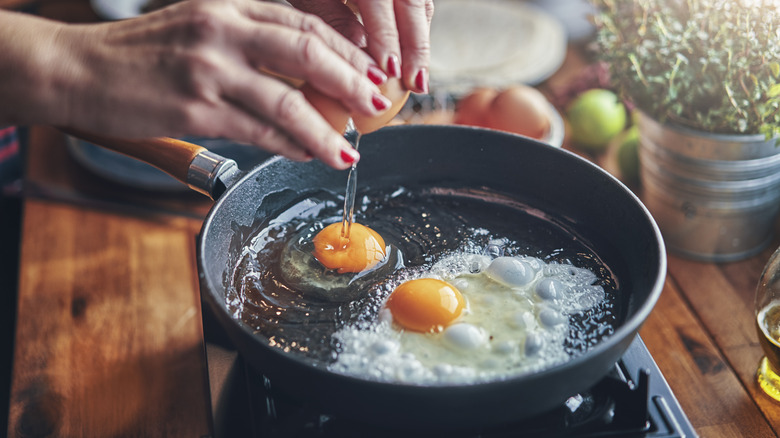The Buttery Difference Between Basted And Sunny-Side-Up Eggs
Eggs are a versatile and delicious breakfast staple loved by many. Whether you prefer scrambled, fried, or poached, there are numerous ways to enjoy these protein-packed wonders. Among the many popular methods of cooking eggs are basting and sunny-side-up.
Basting is a classic cooking technique that involves frying eggs in a generous amount of melted butter which is then spooned over them. This creates a buttery film on top, giving the eggs a rich and indulgent flavor. Sunny-side-up refers to eggs cooked in a skillet with a small amount of oil or butter until the whites begin to set. This method achieves crispy brown edges while the yolk remains beautifully runny.
Ultimately, the main difference between based eggs and sunny-side-up is texture and richness. Basted eggs have tender, buttery, set whites, while sunny-side-up eggs have barely set whites. Both methods provide different eating experiences, and basted eggs offer a more pronounced buttery flavor. At the same time, the other showcases the bright, visually appealing contrast between the cooked whites and a runny yellow yolk. Another tangible difference to butter-basted eggs is the indulgence factor: They're perfect for a lazy brunch when you've nothing else to do except curl up with a good book and eat eggs that have been lovingly slathered with hot, foaming, nutty brown butter. These are a real treat; they require time and love.
Tips for perfectly buttery basted eggs
With the right tools, generous amounts of butter, and gentle heat, you can create a lusciously buttery film over tender egg whites, all while keeping the yolks delightfully runny. These tips will ensure your basted eggs turn out flawlessly every time.
First, ensure you have a non-stick skillet or frying pan to prevent sticking. Add a generous amount of butter to the skillet (1 tablespoon per egg). After cracking the eggs in with the melted butter, use a spoon to slowly drizzle the hot butter over the top so you don't burst the yolk. When basting, this essential step is what infuses them with flavor. The heat from the melted butter also helps cook the whites evenly while creating a buttery film over the yolks. Adjust the heat as needed to maintain the correct cooking temperature. In an ideal situation, the butter will sizzle but not burn. Medium heat is generally suitable, but you may need to lower it if the butter starts to brown too quickly.
Perfectly cooked basted eggs have fully set but tender, buttery, and moist egg whites. Yolks should be runny, with a vibrant appearance. Remove the basted eggs from the skillet and add salt, pepper, or any desired seasonings. Basted eggs are best enjoyed immediately while they are still hot, and the yolks are runny; they aren't as tasty reheated. Serve them alone or as a topping for avocado toast, salads, or your other favorite breakfast dishes.

